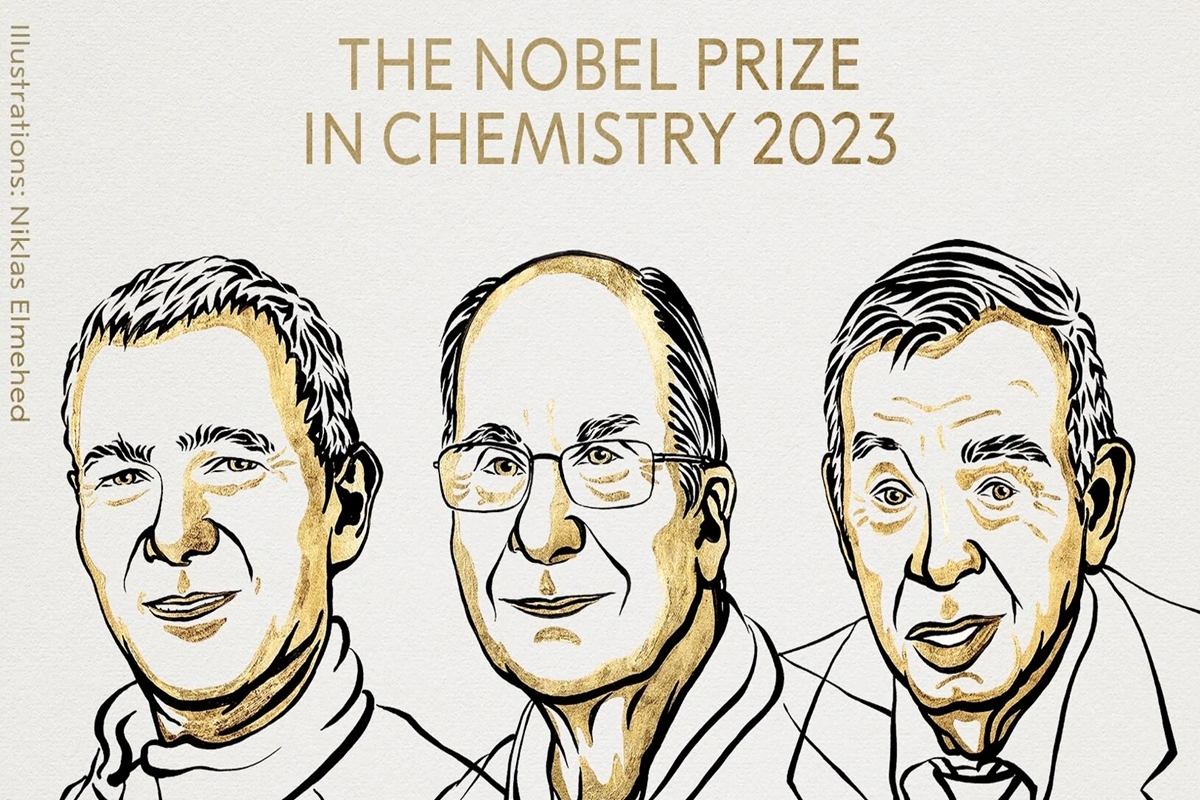Bidding farewell to Maryse Conde
Speak of Segu outside Segu, but do not speak of Segu in Segu.
This year’s Nobel Prize in Chemistry honors the remarkable breakthrough in the realm of quantum dots—ultra-tiny nanoparticles whose unique properties are entirely governed by their minuscule size.

Image Source: The Royal Swedish Academy of Sciences
In a significant recognition of scientific achievement, the Nobel Prize in Chemistry 2023 has been conferred upon Moungi G. Bawendi from the Massachusetts Institute of Technology (MIT) in Cambridge, MA, USA, Louis E. Brus from Columbia University in New York, NY, USA, and Alexei I. Ekimov of Nanocrystals Technology Inc., also in New York, NY, USA.
This year’s Nobel Prize in Chemistry honors the remarkable breakthrough in the realm of quantum dots—ultra-tiny nanoparticles whose unique properties are entirely governed by their minuscule size. Quantum dots, a vital component of nanotechnology, have found their way into our daily lives, illuminating the screens of televisions and LED lamps. Moreover, they serve as invaluable guides for surgeons in the meticulous removal of tumor tissue, among a myriad of other applications.
The Swedish Academy of Sciences highlighted the longstanding knowledge among physicists that size-dependent quantum effects could theoretically manifest in nanoparticles. However, back then, sculpting such minuscule dimensions posed near-insurmountable challenges. Consequently, few harbored hopes that this theoretical knowledge would find practical application.
Advertisement
Nonetheless, a pivotal moment arrived in the early 1980s when Alexei Ekimov succeeded in manifesting size-dependent quantum effects in colored glass. These intriguing color transformations stemmed from nanoparticles of copper chloride, revealing how particle size intricately dictated the glass’s hues through quantum phenomena.
Subsequently, Louis Brus made history as the world’s first scientist to conclusively demonstrate size-dependent quantum effects within particles suspended freely in a fluid. In 1993, Moungi Bawendi revolutionized the chemical production of quantum dots, yielding nearly flawless particles of unparalleled quality—vital for their myriad applications.
Today, quantum dots illuminate computer monitors and television screens, driven by QLED technology. They enhance the subtle nuances of light in certain LED lamps, while biochemists and medical practitioners employ them for the precise mapping of biological tissues, ushering in unparalleled benefits for humanity.
The future holds even greater promise, with researchers envisioning quantum dots contributing to flexible electronics, minuscule sensors, thinner solar cells, and secure encrypted quantum communication. Our exploration of these infinitesimal particles has merely just begun.
This Nobel Prize in Chemistry joins the ranks of other esteemed awards this week, including the Nobel Prize in Physics, presented to Pierre Agostini, Ferenc Krausz, and Anne L’Huillier. Earlier, Katalin Kariko and Drew Weissman received the Nobel Medicine Prize. The anticipation continues with the impending announcements of the Nobel Prizes in Literature, Peace, and Economics on October 5, 6, and 9, respectively.
Advertisement